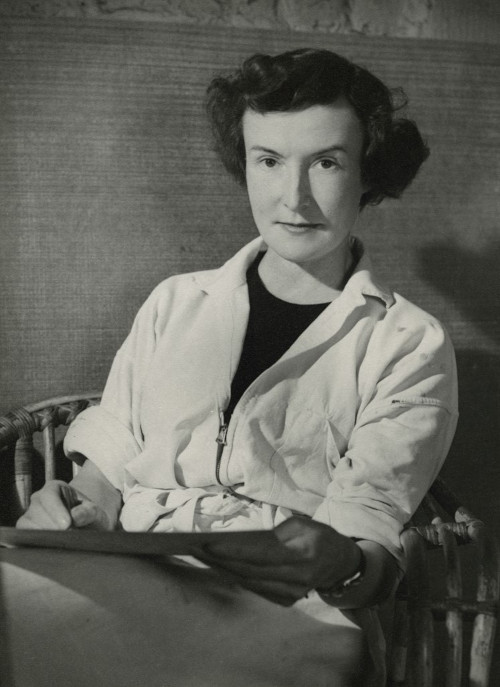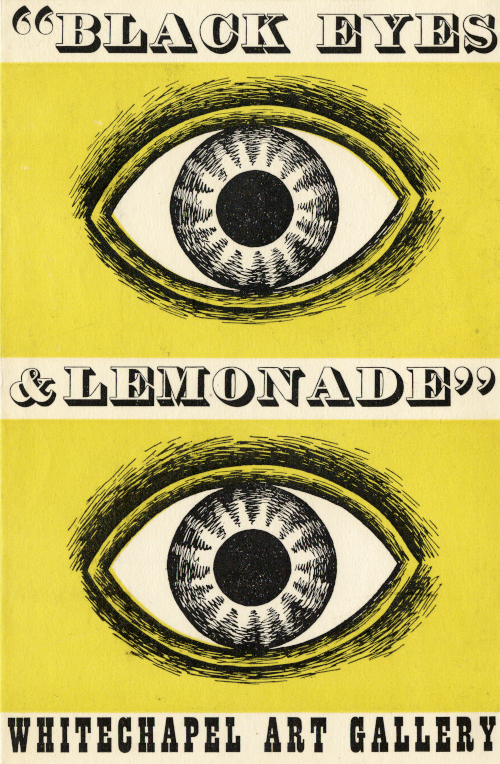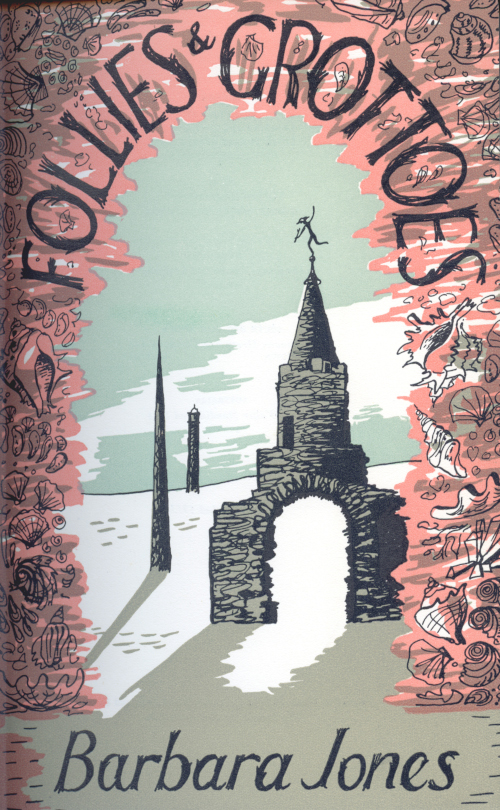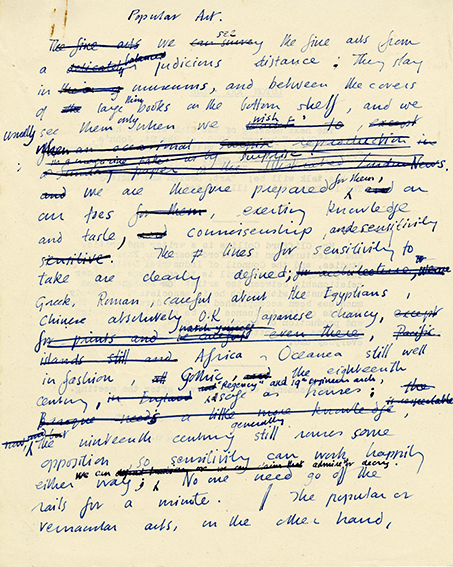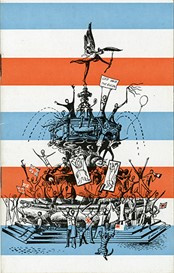Archives Hub feature for July 2024
Born in Croydon, Barbara Mildred Jones was a painter, author, collector and curator. Jones’ father was a saddler and proprietor of a leather goods and trunk shop, and it was here that Jones first encountered traditional handicrafts, a subject she would remain passionate about throughout her life and career.
After receiving a scholarship to Croydon Art School which she attended from 1931-33, Jones studied at the Royal College of Art (RCA), first in the Department of Engraving before transferring to the Department of Mural Decoration, graduating in 1937 following in the footsteps of John Piper, Eric Ravilious, and Edward Bawden. Jones shared their concern with British landscape and architecture, which she documented as objects and artefacts representative of English everyday life.
Jones first gained recognition for her murals with commissions as early as 1937 in private homes and London restaurants. She produced murals for the Council of Industrial Design’s (CoID) Britain Can Make It exhibition (1946), Things for Children section, Design Fair (1948), for which she painted a 3-panelled piece titled Animal, Vegetable, Mineral that hinted at the distinctive ways Jones organised objects, and was heavily involved in the Festival of Britain (1951), designing the Coastline of Britain, Seaside section, and the Outside Broadcasting mural for the Television Pavilion, as well as working on the Lion and Unicorn Pavilion and the Battersea Funfair. She also produced murals for Orient Line ships (1949-1960), continuing to receive mural commissions in both public and private spaces, to a total of 29 in her career.
Jones’ first book, Isle of Wight, a survey of historical and tourist sites, was published in 1950. This was followed by a series of articles written and illustrated for Architectural Review (1944-9) that become her second book Unsophisticated Arts, (1951) which, along with the concurrent Black Eyes & Lemonade exhibition (co-curated with Tom Ingram) at the Whitechapel Gallery, London, introduced Jones’ expertise in what she referred to as popular, or vernacular art to the world. Jones was fascinated with ephemeral and mass-produced objects and spent her career researching, collecting, exhibiting, and writing about items she felt had been overlooked.
For Jones, the objects of the everyday – canal boats and wax figures, food and drink packaging, and the deviant art of tattoos, had just as many important aesthetic qualities and characteristics as rare and precious objets d’art, a classification she was more than happy to subvert. Jones aimed to show we are surrounded by art through her murals, publications and exhibitions, but also through the work she did for educational initiatives including the School Prints series (1945) that brought contemporary art to children, for which she produced the lithograph Fairgrounds, her illustrations for the CoID’s educational booklet This or That (1947), as well as the many teaching positions she held throughout her career.
Not limited to the page or canvas, Jones was a regular guest on the BBC covering topics such as canal boats, taxidermy, the coronation of HRH Queen Elizabeth II and royal memorabilia, another interest of hers. The latter was also the focus of the Royal Occasions exhibition she curated at the Tea Centre, London (1953), contributing memorabilia from her own collection, and designing illustrations for the exhibition guide.
Jones’ third book Follies & Grottoes (1953), is a monumental work injected with Jones’ enthusiasm and wit, exploring two of her passions, travel and craft, and documents the diverse architectural follies erected throughout Victorian Britain, the first survey of its kind. Jones continued to collect new and interesting follies, both in Britain and abroad, and a revised and updated edition was published in 1974.
Jones’ subsequent books cover other every-day topics such as furniture design or watercolour painting, though Jones explored the most vernacular subject of them all in her book Design for Death (1967). Diverse social and cultural traditions and their manifestation through and with objects are recurring motifs in all of Jones’ work: fairground architecture was as fascinating as coffin design, puppets as noteworthy as ceremonial dress, and she adored fêtes and processions of all kinds. Her love of processions reached its peak in her curation of the Lord Mayor’s Show in 1963.
Jones was a member of many notable design organisations, including the Society of Industrial Arts, the Society of Mural Painters, the Royal Anthropological Institute, the Society of Authors, and the Society of Lithographic Artists, Designers, Engravers and Process Workers.
Her expertise in such vanguard subjects and her unique style made her a popular choice for publishers and she contributed chapters and illustrations to many publications throughout her career, many of which are documented in the archive.
The archive consists mostly of research and reference material, manuscripts and typescript drafts of Jones’ published and unpublished works, as well as correspondence and personal papers that document the diverse professional and personal networks developed throughout her career. The archive was transferred by the estate of Barbara Jones in two stages, first in 2009, followed by a larger deposit in 2015, complimenting other collections in the University of Brighton Design Archives such as the archives of James Gardner and the Design Council, both of whom Jones worked with.
Jen Grasso
Digital Content and Systems Co-ordinator
University of Brighton Design Archives
Related
Descriptions of other archives held by University of Brighton Design Archives can be found on Archives Hub here: https://archiveshub.jisc.ac.uk/search/locations/a6626a00-aaa0-30a9-8b3f-5e6309d94163
All images copyright University of Brighton Design Archives. Reproduced with the kind permission of the copyright holders.

